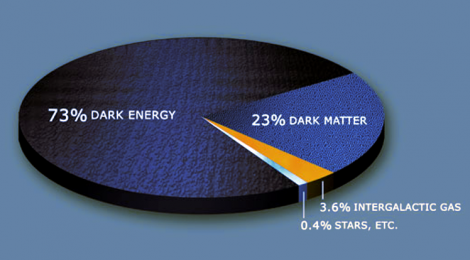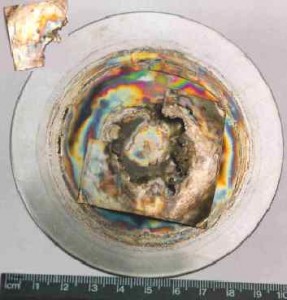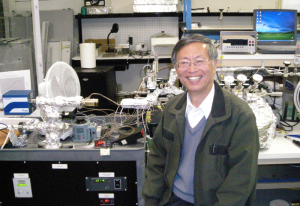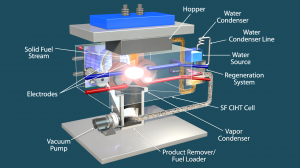
Hydrino Dark Fusion ?
Are We About To See Evidence For Hydrinos
Let’s Hope So
I’ve been around in the cold fusion world long enough to remember seeing Randy Mill’s Nickel Hydrogen (NiH) type experiments running in a five gallon plastic bucket. In fact I’ve seen a lot of cold fusion experiments in various plastic buckets (otherwise known as calorimeters). Only a few have ever shown me sufficient heat to convince me I was seeing something anomalous. I have never been able to come to grips with the measure of results in that light hydrogen venue of cold fusion.
This post is inspired by the announcement by Randy Mills of a demonstration of his “Sun Cell” to be shown on July 21 in Cranberry New Jersey, just outside of Princeton. I am really quite excited to see what he is going to show off. The Sun Cell materials on the Black Light Power site are at once spectacular and/or spooky.
It seems he says BLP has produced and packaged a small bulb of star-like plasma giving off abundant light –brighter than our sun — around which he wraps conventional solar electric cells. Those solar cells convert his new light sun light into thousands, or as Mill’s claims tens of thousands or more, watts of electricity; he will save the world from the ravages of the emissions from remaining centuries of noxious emissions of the fossil fuel age. That’s worth investing some hope and good wishes on his behalf.
I am not sure how he has solved the pesky thermal cooling engineering problem that is the bane of the best of cold fusion. He surely needs to move a lot of heat away from a very energy dense point of origin.
Pioneering
I must say I am most impressed with Mill’s ‘stick to it nature’ as I know very well the trials and tribulations of being committed to unfashionable pioneering science and seen as a significant pioneer in such fields. The most noted aspect of being a pioneer are the seemingly endless packs of trolls, groupies, and armchair pundits crammed behind every bush. And there are so damned many bushes to pass by. There is that additional well known pioneer adage that says pioneers count more arrows in their back than in their front, so much for peer review.
The Black Light Power operation in Princeton that Dr. Mill’s has put together impresses me greatly “on paper”. I sure hope he is right in his discoveries even though I don’t really see how it fits into my world of deuterium cold fusion. The supposed “light” hydrogen reactions that somehow are not quite fusion but rather something akin to a super chemistry with the strange reduction of electron state are a mystery.
Naturally one reason I am leaning to Mill’s discovery is that it seems to parallel closely one of my own experiments in which I exposed a powdered deuterium loaded metal to an electrifying environment in the presence of copious UV light. My result was an incredible flux of what I feared were neutrons. Fortunately Edward Teller helped me understand that I wasn’t cooked from the apparent 10 kilorem of neutrons so the particles detected must have been some strange crazy mishegnon particles instead. You can read more on this experiment here.
Dark Fusion
I chatted with Randy years ago at a physics conference and we exchanged some ideas on how the hydrino state of deuterium might facilitate a sort of hydrino moderated dark fusion of two deuteriums, perhaps via something akin to a screening mechanism and just maybe there-in is a connecting thread between our work. But how one gets two protons to fuse even in the strange states characteristic of cold fusion is a stretch for me, that qualify as dark fusion for sure.
The central question between cold fusion and hydrinos becoming dark matter is the resulting energy. Hydrino production is an order of magnitude or more energetic than burning hydrogen while DD fusion yielding 4He, hot or cold, is about ten million times more energetic that burning hydrogen (or deuterium). So if one needs a source of energy sufficient to produce a bit of star-like plasma you need around a million times the number of hydrino events as DD cold fusion events to do so. At least we are not astronomically far apart.
I tend to think that the 1 atom of D for every 5000+ atoms of H that are found in common hydrogen is the real active constituent of “light” hydrogen NiH fusion or LENR (Low Energy Nuclear Reactions) for those who are afraid of the ghost of Martin Fleischman or are merely his ‘cold fusion’ usurpers. It’s easier to imagine hydrinos than proton proton fusion.
Common Threads

Palladium target foil having melted while immersed in room temperature D2O. In this sono-fusion experiment I worked on and reproduced many times. Cold fusion nuclear heat is produced at reaction rates more like the speed of light than are chemical reactions that proceed at the speed of sound. Heat as well moves at more or less the speed of sound. Oops! Palladium melts at 1600 degrees C! The challenge is keeping the reaction rate and heating under control.
The real common thread that connects DD cold fusion to Ni H LENR and Hydrinos are that all the reactions make great amounts of heat in nano-domains at very fast rates. Enough to generate very hot plasmas albeit mostly at such nano-scopic scale that those plasma don’t escape the metal lattices in which they are born. When those reactions do get really going things can get too hot to handle.
In the case of DD cold fusion the best of us have been able to repeatedly and on demand produce and measure helium, mostly 4He, from reactions producing something like e11-12 4He per second. That’s a prodigious amount of helium considering our measuring instruments are sensitive to changes of 4He in the range of e8 atoms. This helium has been observed and measured six ways from sundown using the very finest tools on the planet for such measurements. And to add more mystery sometimes there is abundant 3He as well in ratios far outside the normal 4He:3He ratio.
But in the world of Ni H reactions no one seems to even bother looking for helium or other nuclear ash. OK some work on looking at transmutations of Ni into Cu is claimed but the methods that seem to be used for these measurements just doesn’t hold up to much scrutiny. XRF – bzzzt give me a break. Given the low cost of using definitive tools to make such measurements it’s a very dubious sign to see those making such claims having not spent the under $5K it would take to be truly definitive.
An Offer To Help
I will make the same offer to Dr. Mill’s and Black Light Power that I made to Andrea Rossi several years ago. (Rossi politely turned me down with an collegial email saying “Dear Russ… Thank you for your offer… but you must know you are one of my most serious competitors I can’t agree.” ) Rossi is a gentleman.

My helium mass spec next to Prof Xing Zhong Li one of China’s leading nuclear scientists. At the time it was connected to my gas phase nano-fusion six-pack measuring helium production in near real time in my ‘garage’ lab near Palo Alto
Here’s my offer to help — I will at my own expense bring to his facility my state of the art helium mass spectrometer. There I will be happy to teach him or his staff how to operate it (or do the work myself under his supervision) to search for 4He in the gases that are present in his reaction chamber. We only need infinitely small aliquots of said gas to bleed into our ultra-low vacuum quadropole mass spec for analysis.
If we see more than e8-9 atoms of 4He per aliquot growing over time in samples from his reaction that will be incredibly interesting. One watt (joule) of cold fusion yields e11 atoms of helium every second. It won’t take more than a month to complete the task but he can keep my helium instrument on loan for much longer if he needs it.
Hey perhaps we are both right and there are hydrinos and cold fusion present in his devices.
In Mill’s work he is convinced his reaction ash is just plain old dark matter and to my knowledge no one but Mill’s and company have any idea how to measure that stuff. Not that Mill’s doesn’t explain how to identify the dark matter he just doesn’t provide a means to reproduce the production of it so that one might practice up on the dark matter spectroscopy needed. So we’ll have to wait and see how his demonstration turns out and wait for the cubic foot megawatt electrical generator to become available on Amazon.com.
Dark Horses
In the meantime perhaps our Italian stallion colleague Andrea Rossi will bolt out of the secret stables with an incandescent HOT-CAT that we might more readily reverse engineer and then trundle off to the local TOF-SIMS and Jack Rabbit reactor to see what sort of isotopic anomalies are revealed with sufficient certainty to be convincing.
Watch for updates as the demonstration proceeds.

